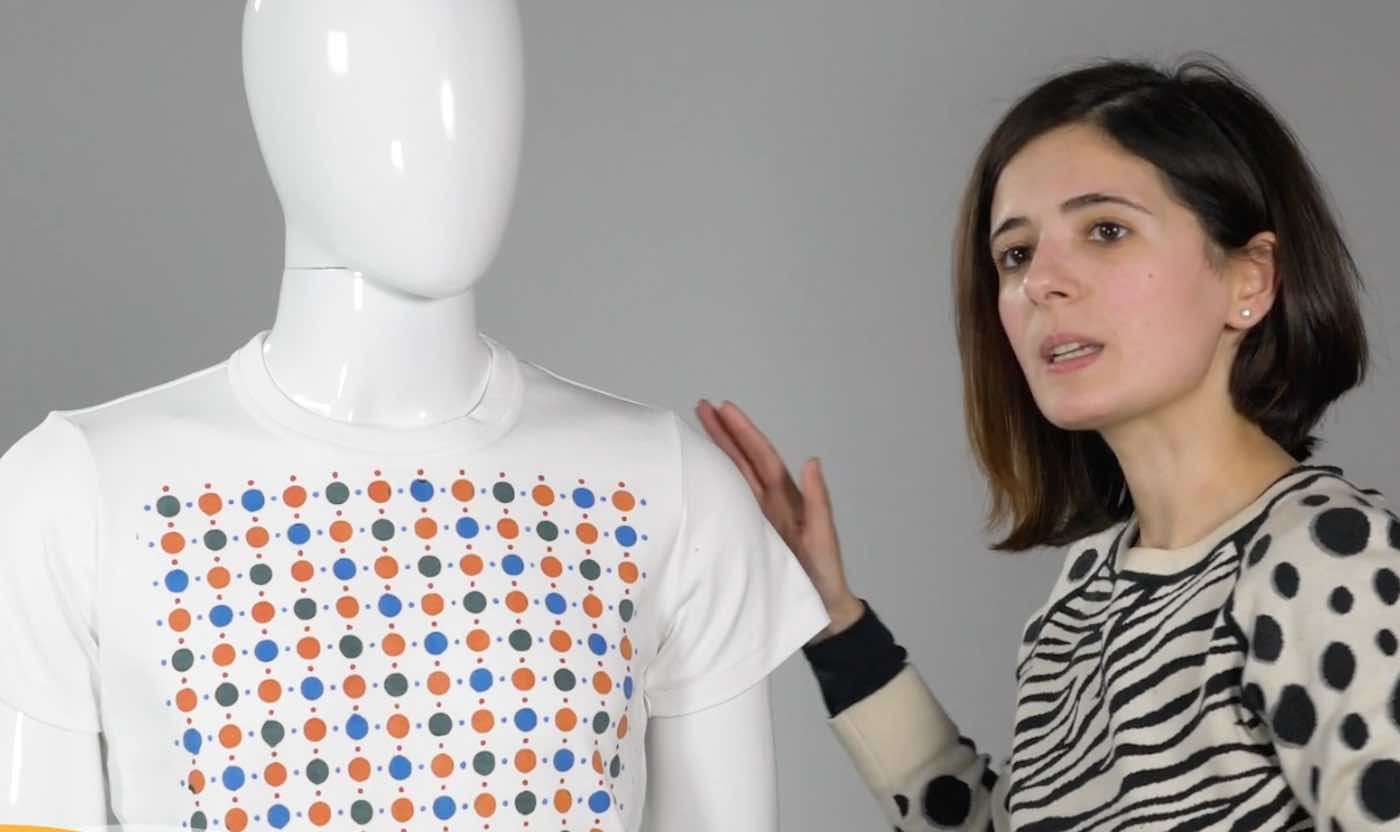Power Cables a Thing of the Past? How About Solar Energy Beamed From Space?
Japanese scientists announce their successful test of wireless energy transmission, a discovery they hope will lead to solar energy transmitted from space.

Thanks to a recent development from Tufts University's School of Engineering, we may soon be able to wear clothing that can change color in response to chemicals released from our bodies or detected in the air.
The biomaterial-based inks can be screen-printed onto textiles such as clothes, shoes, or even face masks in complex patterns and at high resolution, providing a detailed map of human response or exposure.
The advance in wearable sensing, reported in Advanced Materials, could simultaneously detect and quantify a wide range of biological conditions, molecules and, possibly, pathogens over the surface of the body using conventional garments and uniforms.
"The use of novel bioactive inks with the very common method of screen printing opens up promising opportunities for the mass-production of soft, wearable fabrics with large numbers of sensors that could be applied to detect a range of conditions," said Professor Fiorenzo Omenetto, corresponding author of the study. "The fabrics can end up in uniforms for the workplace, sports clothing, or even on furniture and architectural structures."
Wearable sensing devices have attracted considerable interest in monitoring human performance and health. Many such devices have been invented incorporating electronics in wearable patches, wristbands, and other configurations that monitor either localized or overall physiological information such as heart rate or blood glucose.
The research presented by the Tufts team takes a different, complementary approach—non-electronic, colorimetric detection of a theoretically very large number of analytes using sensing garments that can be distributed to cover very large areas: anything from a patch to the entire body, and beyond.
The components that make the sensing garments possible are biologically activated silk-based inks. The soluble silk substrate in these ink formulations can be modified by embedding various "reporter" molecules—such as pH sensitive indicators, or enzymes like lactate oxidase to indicate levels of lactate in sweat. The former could be an indicator of skin health or dehydration, while the latter could indicate levels of fatigue of the wearer.
Many other derivatives of the inks can be created due to the versatility of the silk protein by modifying it with active molecules such as chemically sensitive dyes, enzymes, antibodies and more. While the reporter molecules could be unstable on their own, they can become shelf-stable when embedded within the silk fibroin in the ink formulation.
The inks are formulated for screen printing applications by combining with a thickener (sodium alginate) and a plasticizer (glycerol). The screen printable bio-inks can be used like any ink developed for screen printing, and so can be applied not just to clothing but also to various surfaces such as wood, plastics and paper to generate patterns ranging from hundreds of microns to tens of meters.
The technology builds upon earlier work by the same researchers developing bioactive silk inks formulated for inkjet-printing to create petri dishes, paper sensors, and laboratory gloves that can indicate bacterial contamination by changing colors.
"The screen printing approach provides the equivalent of having a large, multiplexed arrangement of sensors covering extensive areas of the body, if worn as a garment, or even on large surfaces such as room interiors," said Giusy Matzeu, research assistant professor of biomedical engineering at the school and first author of the paper. "Coupled with image analysis, we can obtain a high resolution map of color reactions over a large area and gain more insight on overall physiological or environmental state. In theory, we could extend this method to track air quality, or support environmental monitoring for epidemiology."
The fact that the method uses common printing techniques also opens up avenues in creative applications—something explored by Laia Mogas-Soldevila, architect and recent PhD graduate at Tufts in Omenetto's SilkLab.
Mogas-Soldevila has helped to create beautiful tapestries, displaying them in museums across the United States and Europe. The displays are interactive, allowing visitors to spray different, non-toxic chemicals onto the fabric and watch the patterns transform.
"This is really a great example of how art and engineering can gain from and inspire each other," said Mogas-Soldevila. "The engineered inks open up a new dimension in responsive, interactive tapestries and surfaces, while the 1,000-year old art of screen printing has provided a foundation well suited to the need for a modern high resolution, wearable sensing surface."
Reprinted from Tufts University
(WATCH the explanatory video from Tufts university below)
Color Your News Feed With Positivity By Sharing This Cool Research With Your Friends On Social Media…
Be the first to comment